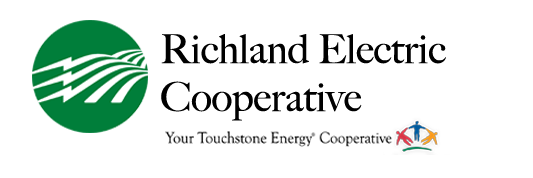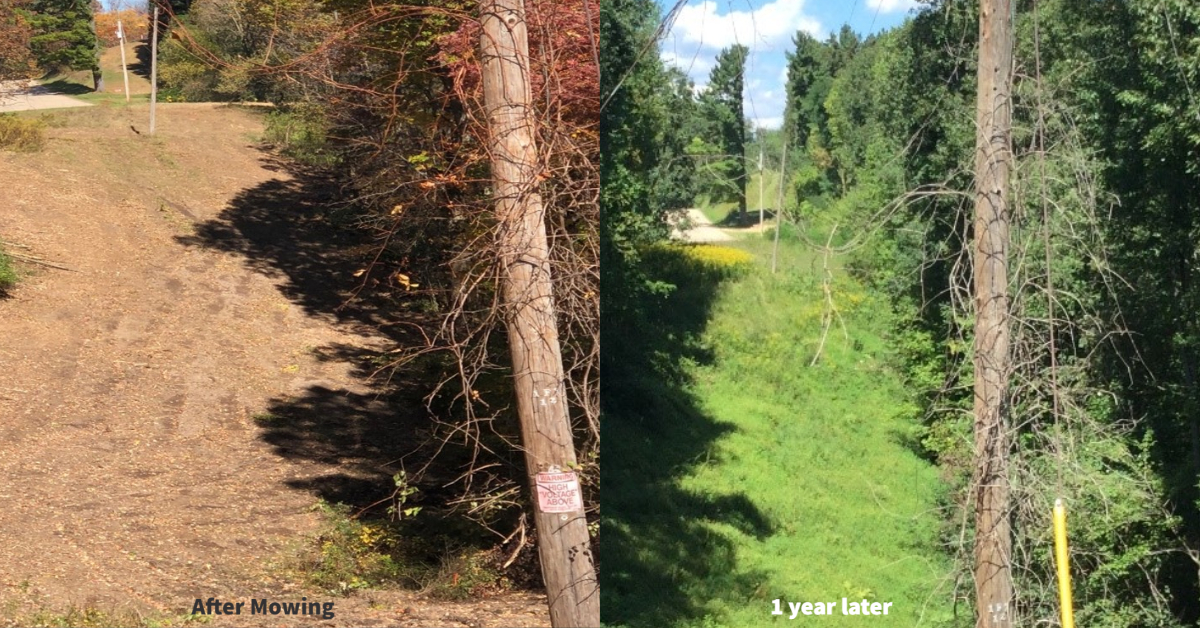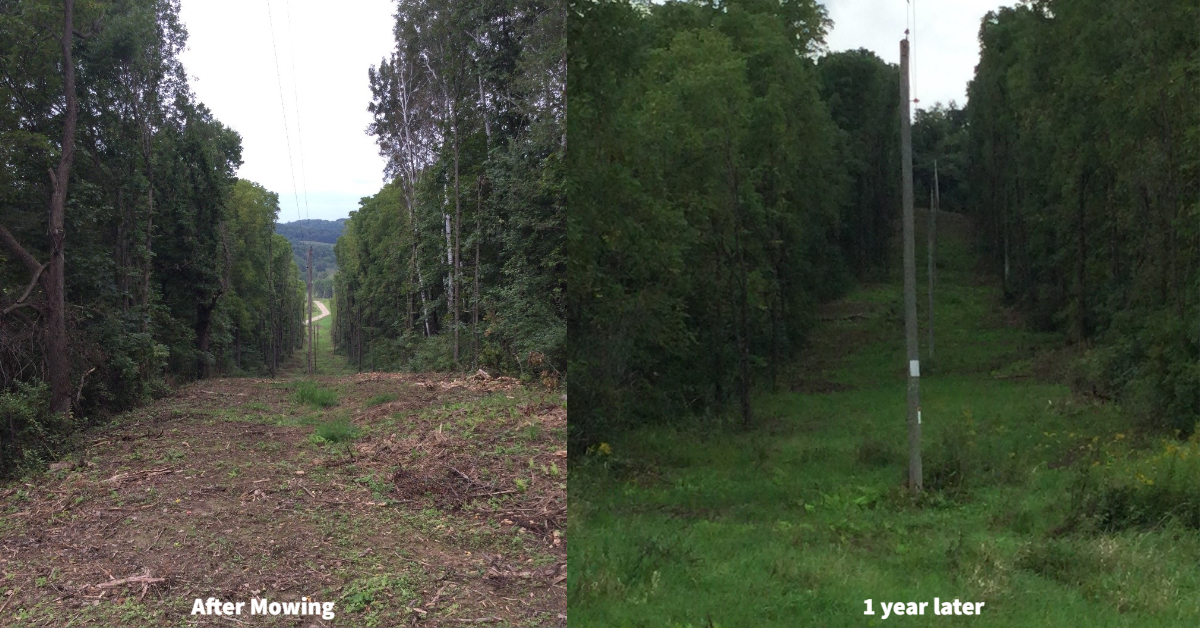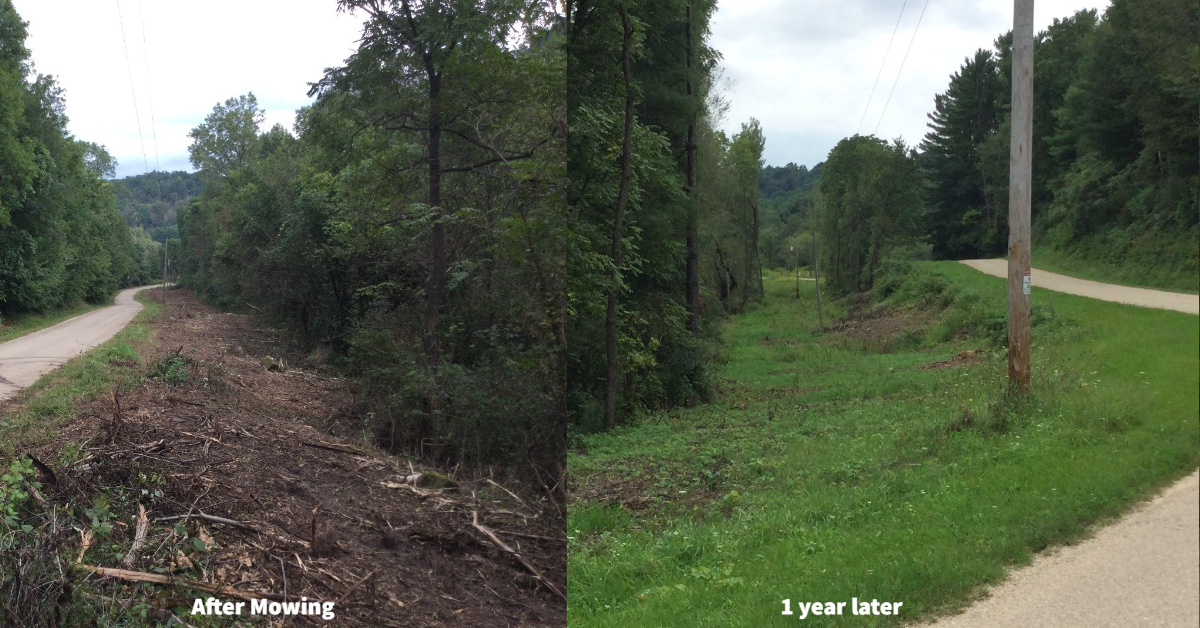Vegetation Management
An electric right-of-way (ROW) is a strip of land a electric utility uses to construct, maintain, or repair a power line. REC has a 25 foot right-of-way on each side of the powerline.
REC is governed by many State and Federal regulations and regulatory bodies such as National Electric Safety Code (NESC), and the State of Wisconsin Department of Natural Resources (DNR) that requires us to maintain these ROWs.
In order to provide safe, reliable electrical service, REC must maintain the rights-of-way under and around cooperative owned power distribution lines. Through an integrated vegetation management program, REC maintains vegetation on more than 900 miles of distribution line rights of way. Our maintenance activities are necessary to provide, safe, reliable, and affordable service to all members. The vegetation management program involves, mowing, cutting dangerous trees, pruning, applying herbicide and removing trees.
You will receive a letter well in advance, informing you crews will be trimming trees in your area. Contractors will contatct member with yard work before work begins. If members are not home and cannot be reached by phone, a DOOR CARD will be left. The purpose of the card is for members to contact the contractor about work.
Please contact the contractor if you have concerns about the work or to acknowledge you have received the door card. We all want to be on the same page.
Tree Pruning
Tree limbs that come into contact with power lines are a major cause of electrical outages, and limbs that touch electric power lines can become energized or even break and fall, bringing the lines down with them. To reduce outages and hazards caused by tree contact, REC or contractors prune trees away from its power lines on a planned cycle.
REC or its contractor prunes trees to industry standards that were developed by the American National Standards Institute (ANSI), the International Society of Arboriculture (ISA), United States Department of Agriculture (USDA), Rural Utilities Service (RUS) and otherwise prudent utility practices relative to the particular site where special conditions may exist such as rock outcroppings, ditches, rivers, streams and more. REC uses only qualified line clearance personnel to prune trees near our power lines. We remove incompatible trees from the easement area. These are trees or other types of vegetation which grow too tall to remain on the right-of-way, and could threaten the continued safe, reliable operation of the distribution line. Unfortunately, sometimes these trees were planted by property owners. They must be removed along with incompatible trees which may have seeded in naturally.
Generally, shrubs, vegetable gardens, grasses and low-growing trees which have a mature height of less than 10 feet are allowed on the easement area as long as they do not block or restrict access to the area, and are not planted in a location that could cause a threat to the continued safe, reliable operation of the distribution line.
Danger Tree Cutting
"Danger Trees" are trees off the easement that are dead, dying, diseased, severely leaning or growing in a manner that could damage the distribution facilities when falling. The member shall allow REC to cut or trim these trees as needed to eliminate danger.
In rural areas, limbs and brush smaller than 4 inches in diameter are piled and left on site. In urban areas, the limbs are chipped and hauled away. Wood larger than 4 inches in diameter is left on site in a manageable length at the base of the tree in urban areas and put on the edge of the right-of-way in rural areas.
In residential areas with overhead lines, placing lines underground would be difficult and expensive. It also requires REC to dig into the tree's roots. This could harm trees and make them susceptible to disease or kill them. Terrain also dictates where powerlines can be buried.
REC does utilize herbicides to manage fast-growing, tall woody species or to prevent regrowth of mowed or pruned areas. Only EPA approved herbicides are used. The herbicides are classified as "general-use" by the EPA. The application crews are trained to identify and target the tall and fast growing incompatible species where herbicide use is appropriate.
The application will be made during the months of June, July, or August and a letter will be mailed to the membership if applications are scheduled to be made in their area.
A tank mix of Garlon 3a and Escort herbicide will be used. This mixture controls broadleaf weeds and brush, but does not kill grass. There is no pasture or grazing restriction for either of these products for all livestock except lactating dairy animals. For lactating dairy animals, do no graze or harvest green forage for 14 days following application. If the powerline right-of-way that crosses your property supports brush and is accessible to the lactating dairy animals, please notify our office in advance.
If you would not like us to use herbicides on your property please contact our office.
No, this is a service REC performs for reliability and safety reasons.
Any member who desires to remove a tree that could potentially come into contact with a power line during felling may request the cooperative fell the tree. REC, in its sole discretion may opt to fell the tree for the member or to temporarily remove the line so the tree felled will not contact an energized line. There is no cost to the member for this service, however, REC will not provide any clean-up of felled trees when working on member requested removals.
You can find the tree work request form by clicking here
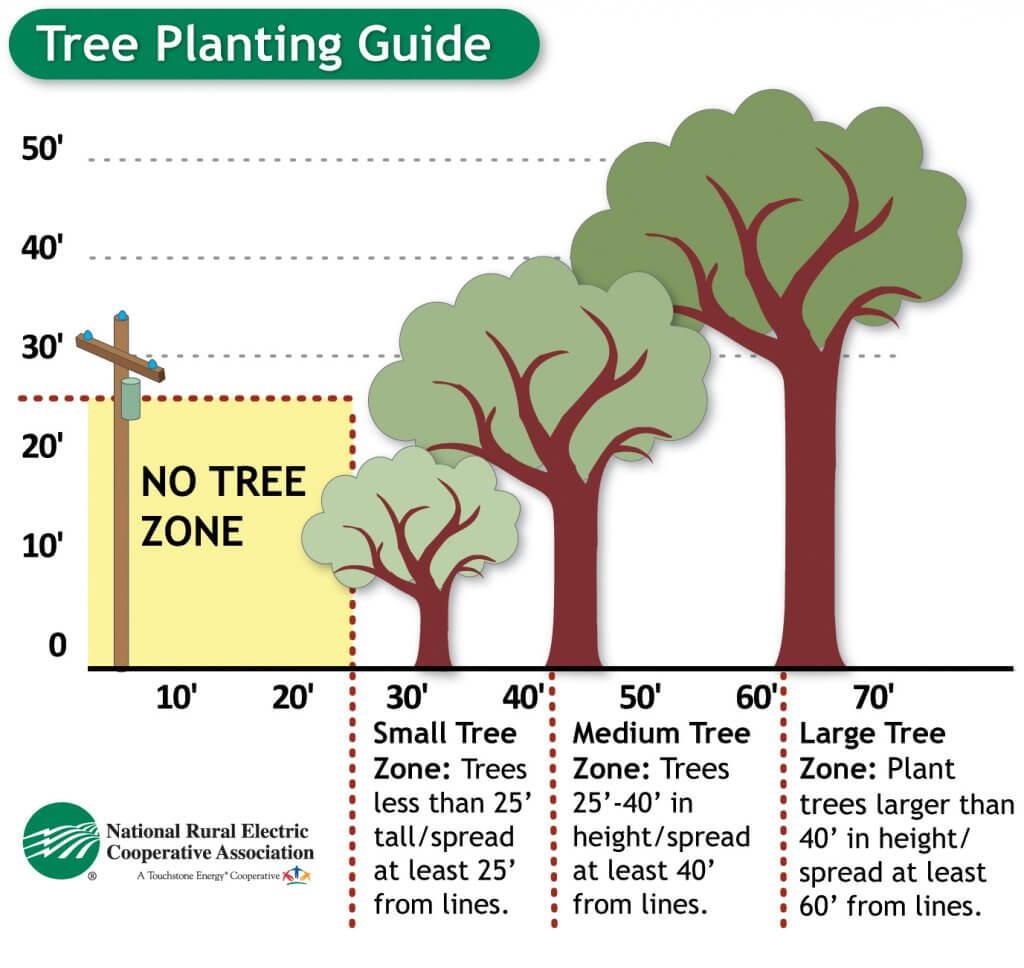
Large trees (30' - 70' in height) Greater than 48' from line
| COMMON NAME | HEIGHT | FORM |
| American Beech | 40 - 60 ft. | Oval |
| Ashes | 30 - 70 ft. | Round |
| Austrian Pine | 40 - 60 ft. | Vertical |
| Birch | 40 - 70 ft. | Pyramidal |
| Blue Spruce | 30 - 60 ft. | Pyramidal |
| Canada Hemlock | 40 - 60 ft. | Pyramidal |
| Corktree | 30 - 50 ft. | Round |
| Ginkgo | 40 - 60 ft. | Columnar |
| Hackberry | 40 - 60 ft. | Vase |
| Honeylocust | 40 - 60 ft. | Upright |
| Kentucky Coffeetree | 50 - 70 ft. | Upright |
| Larch | 40 - 70 ft. | Pyramidal |
| Littleleaf Linden | 35 - 50 ft. | Pyramidal |
| Norway Maple | 40 - 60 ft. | Columnar |
| Oaks | 50 - 70 ft. | Round |
| River Birch | 30 - 60 ft. | Vase |
| Sugar Maple | 40 - 70 ft. | Round |
| White Fir | 30 - 50 ft. | Pyramidal |
Medium Trees (20' - 45' in height) 34' - 48' distance from line
| COMMON NAME | HEIGHT | FORM |
| 3-Flowered Maple | 25 - 30 ft. | Upright |
| American Arborvitae | 20 - 30 ft. | Pyramidal |
| Amur Chokecherry | 20 - 30 ft. | Round |
| Callery Pear | 25 - 45 ft. | Pyramidal |
| Hophornbeam | 30 - 35 ft. | Pyramidal |
| Laurel Willow | 20 - 40 ft. | Round |
| Ohio Buckeye | 20 - 40 ft. | Round |
| Sargent Cherry | 20 - 40 ft. | Spreading |
| Serviceberry | 20 - 25 ft. | Spreading |
| Swiss Stone Pine | 25 - 35 ft. | Pyramidal |
| Ussurian Pear | 25 - 35 ft. | Spreading |
| Washington Hawthorn | 20 - 30 ft. | Upright |
| Yellowwood | 25 - 40 ft. | Round |
